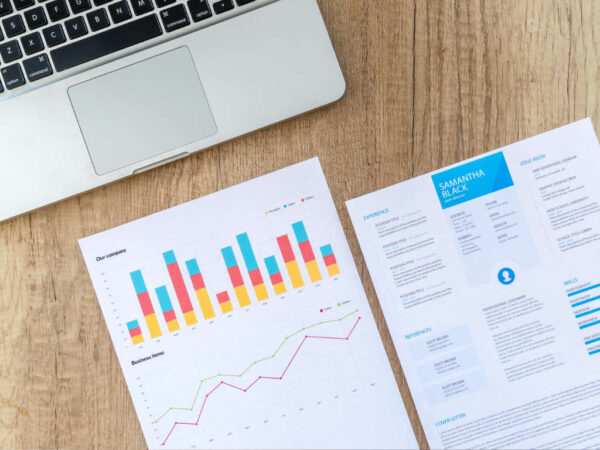Python for Data Science
₹2,965.25
Description
This Python for Data Science course curriculum is an intensive application oriented, real-world scenario based program which is foundation for Artificial Intelligence, Machine Learning & Deep Learning. This course is a 120 hours program, intensive skill oriented, practical training program required for building AI based models. It is designed to give the participant enough exposure to the variety of applications that can be built using techniques covered under this program. This course is designed for the experienced professionals from variety of IT backgrounds.
Prerequisites
Familiarity with basics of Python programming is helpful for this course.
Key Learning Outcomes:
When you complete this Introduction to Data Analytics course, you will be able to accomplish the following:
- Stay Industry relevant and grow in your career.
- Usage of Numpy, Matplotlib, Pandas along with Basics of Python
- Understand how to apply data visualization practices in real-world scenarios
- Work with different types of data.
- Usage of pandas and its various functionalities.
Target Audience:
This course is ideal for anyone who wishes to learn the details of data science and pursue a career in this growing field of Artificial Intelligence, Machine Learning, Deep Learning, Data Analytics & Data Science.
Test & Evaluation
- During the program, the participants will have to take all assignments given to them for better learning.
- At the end of the program, a final assessment will be conducted.
Certification
- All successful participants will be provided with a certificate of completion.
- Students who do not complete the course / leave it midway will not be awarded any certificate.
Delivery Mode & Duration :
Online Live Mode – 120 Hours (60 Hours Online Live sessions + 60 Hours of assignment)
Module 01 – An Introduction to PYTHON
- Introductory Remark about Python
- A Brief History of Python
- How Python is differing from other languages
- Python Version
- Installing Python
- IDLE
- Getting Help
- How to execute Python program?
- Writing your first program
Module 02 – Python Basics
- Introduction
- Python keywords and Identifiers
- Python statements
- Comments in python
- Basic Syntax
- Printing on screen
- Getting user input -Reading data from keyboard
- Exercise
- Key Takeaways
Module 03 – Variables and data types
- Introduction
- Variables
- Data types
- Numbers
- Strings
Module 04 – Arrays in Python
- Lists
- Tuples
- Dictionary
- Exercise
Module 05 – Decision making & Loops
- Introduction
- Control flow and syntax
- The if statement
- Python operators
- The while Loop
- Break and continue
- The for Loop
- Pass statement
- Exercise
Module 06 – Function
- Introduction of Function
- Calling a function
- Function arguments
- Built in function
- Scope of variables
- Decorators
- Passing function to a function
Module 07 – Modules and Packages
- Introduction of Modules and Packages
- Importing Modules
- Standard Modules- sys
- Standard Modules- OS
- The dir() Function
- Packages
Module 08 – Exception Handling
- Introduction of Exception Handling
- Errors
- Run Time Errors
- Handling IO Exception
- Try….except statement
- Raise
- Assert
Module 09 – File Handling in Python
- Introduction of Exception Handling
- Introduction to File Handling in Python
- Files and Directories
- Writing Data to a file
- Reading data from a file
- Additional file methods
- Working with files
- Working with Directories
- The pickle Module
Module 10 – Object Oriented Programming in Python
- Introduction of OOP
- Classes & Objects
- Introduction of classes and objects
- Creating classes
- Instance methods
- Special class method
- Inheritance
- Method overriding
- Data hiding
Module 11 – Mathematical Computing using NumPy
- Learning objectives
- Introduction of NumPy in Python
- Install NumPy
- NumPy Creating Arrays
- Operations Using NumPy
- NumPy Data Types
- NumPy – Array Creation Routines
- NumPy – Indexing & Slicing
- NumPy – Advanced Indexing
- NumPy Integer Indexing
- NumPy Boolean Array Indexing
- NumPy – Iterating Over Array
- NumPy – Broadcasting
- NumPy – Array Manipulation
- NumPy – Mathematical Functions
Module 12 – Data visualization using Matplotlib
- Learning objectives
- Data Visualization
- Considerations of Data Visualization
- Factors of Data Visualization
- Python Libraries
- Create Your First Plot Using Matplotlib
- Line Properties
- Create a Line Plot for Football Analytics
- Multiple Plots and Subplots
- Create a Plot with Annotation
- Create Multiple Plots to Analyze the Skills of the Players
- Create Multiple Subplots Using plt.subplots
- Types of plots
- Create a Stacked Histogram
- Create a Scatter Plot of Pretest scores and Posttest Scores
- Create a Pie Chart
- Create a Bar Chart
- Create Box Plots
- Analyzing Variables Individually
- Key Takeaways
Module 13 – Data Manipulation with Pandas
- Learning Objectives
- Introduction to Pandas
- Data structures of Pandas
- Pandas Series
- Pandas DataFrames
- Pandas Object creation
- Viewing Pandas data
- Selection on Pandas Data
- Operations on Pandas Data
- Essential basic functionality on Pandas DataFrame
- Head and tail on Pandas DataFrame
- Attributes and underlying data
- Grouping
- Sorting
- Importing and exporting data
- Indexing and selecting data
- Different choices for indexing
- Attribute access
- Slicing ranges
- Selecting random samples
You can also give us a call on Mobile +91-9335469335





